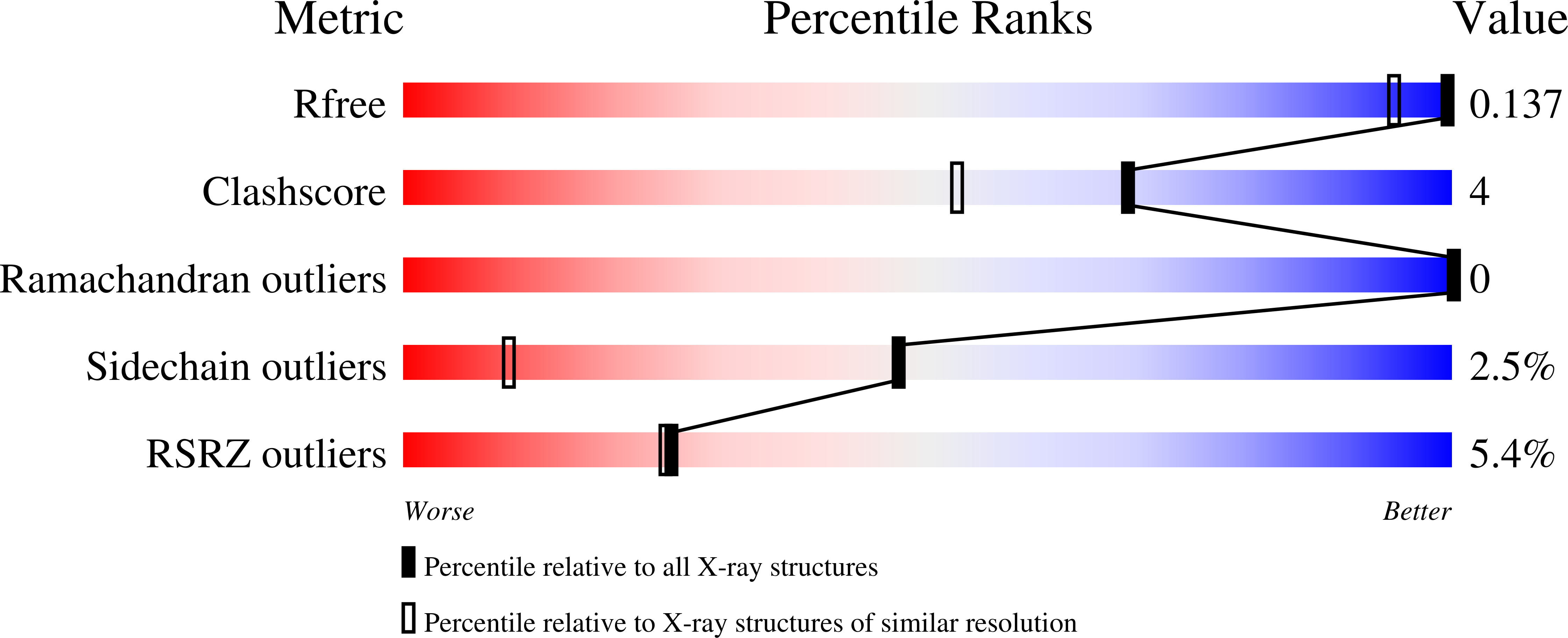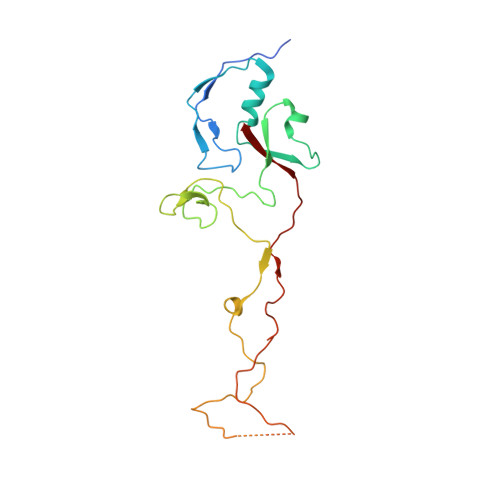Evolution of bacteriophage tails: structure of t4 gene product 10
Leiman, P.G., Shneider, M.M., Mesyanzhinov, V.V., Rossmann, M.G.(2006) J Mol Biol 358: 912-921
- PubMed: 16554069
- DOI: https://doi.org/10.1016/j.jmb.2006.02.058
- Primary Citation of Related Structures:
2FKK, 2FL8, 2FL9 - PubMed Abstract:
The success of tailed bacteriophages to infect cells far exceeds that of most other viruses on account of their specialized tail and associated baseplate structures. The baseplate protein gene product (gp) 10 of bacteriophage T4, whose structure was determined to 1.2 A resolution, was fitted into the cryo-electron microscopy structures of the pre and post-infection conformations of the virus. gp10 functions as a molecular lever that rotates and extends the hinged short tail fibers to facilitate cell attachment. The central folding motif of the gp10 trimer is similar to that of the baseplate protein gp11 and to the receptor-binding domain of the short tail fiber, gp12. The three proteins comprise the periphery of the baseplate and interact with each other. The structural and functional similarities of gp10, gp11, and gp12 and their sequential order in the T4 genome suggest that they evolved separately, subsequent to gene triplication from a common ancestor. Such events are usual in the evolution of complex organelles from a common primordial molecule.
Organizational Affiliation:
Department of Biological Sciences, Purdue University, 915 W. State Street, West Lafayette, IN 47907-2054, USA.


















